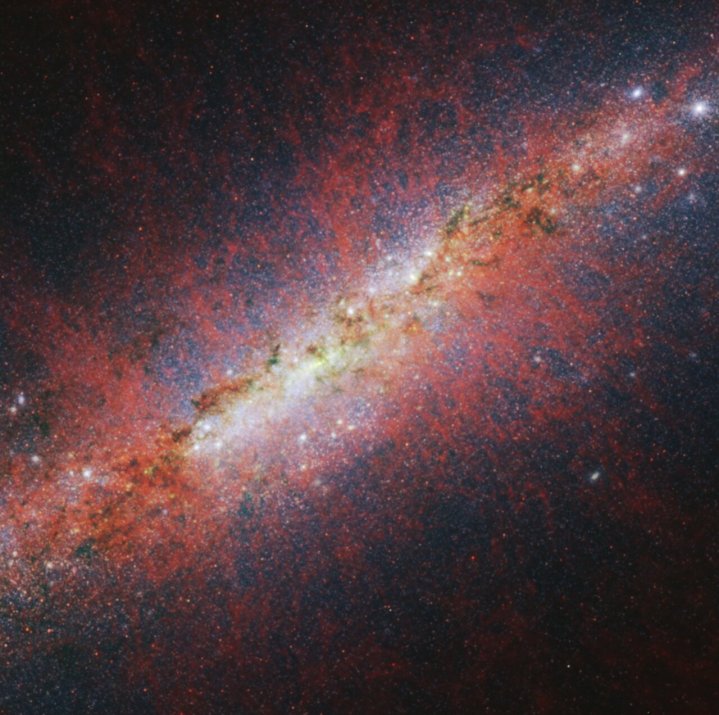A stunning new pair of images from the James Webb Space Telescope show a new view of a familiar galaxy. Messier 82 is a famous starburst galaxy, full of bright and active star formation, and scientists are using Webb to study how stars are being born in the busy conditions at the center of the galaxy.
Astronomers used Webb’s NIRCam instrument to observe the galaxy, and by splitting the resulting data into shorter and longer wavelengths, you can see different features which are picked out in the bustling, active region where stars are forming.


“M82 has garnered a variety of observations over the years because it can be considered as the prototypical starburst galaxy,” said Alberto Bolatto, lead author of the research, in a statement. “Both Spitzer and Hubble space telescopes have observed this target. With Webb’s size and resolution, we can look at this star-forming galaxy and see all of this beautiful new detail.”
As Bolatto mentions, one of the famous observations of M82 is from the Hubble Space Telescope. Hubble took a gorgeous image of the galaxy in 2006, viewing it primarily in the optical wavelength, but the new images from Webb provide a different view as they cover the infrared.
“This image shows the power of Webb,” said Rebecca Levy, second author of the study, at the University of Arizona in Tucson. “Every white dot in this image is either a star or a star cluster. We can start to distinguish all of these tiny point sources, which enables us to acquire an accurate count of all the star clusters in this galaxy.”
The researchers have identified features like small specks of green, which indicate the presence of iron from supernova remnants, and areas of red which represent ionized hydrogen gas, illuminated by nearby stars. The team was particularly interested in the streams of particular blowing away from areas of newly formed stars, called galactic wind.
“With these amazing Webb images, and our upcoming spectra, we can study how exactly the strong winds and shock fronts from young stars and supernovae can remove the very gas and dust from which new stars are forming,” said Torsten Böker of the European Space Agency, a co-author of the study. “A detailed understanding of this ‘feedback’ cycle is important for theories of how the early Universe evolved, because compact starbursts such as the one in M82 were very common at high redshift.”
The research has been accepted for publication in The Astrophysical Journal.



